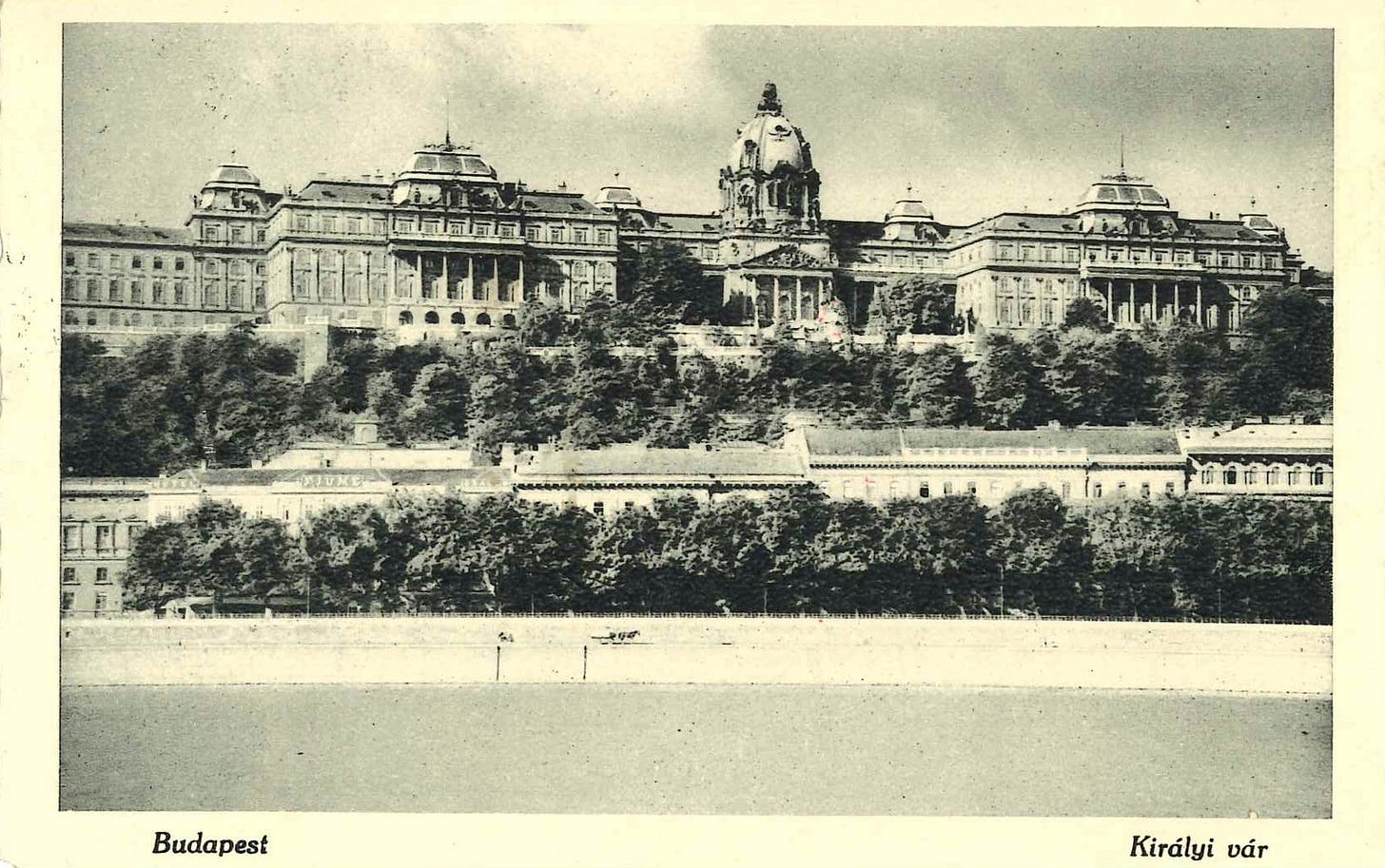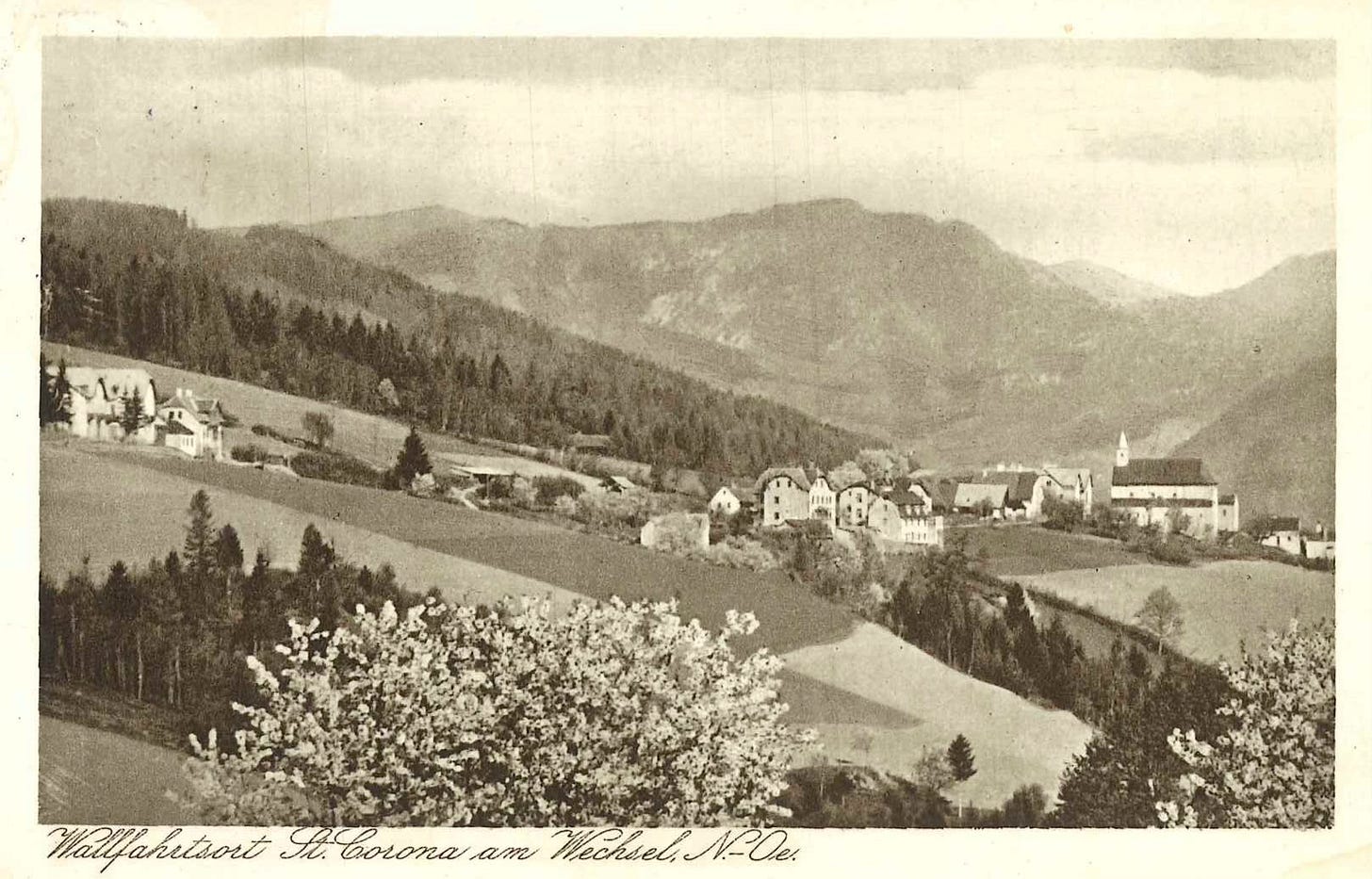Dr. Ernst Jürgensen & Irma Chotek
A first glimpse at the 52 postcards exchanged between husband and wife, sent between 1918 and the Second World War
Things are getting serious in regards to turning the evidence in the Ernst Sonntag Postcard Collection into academic-plus output (i.e., stuff that might be of interest to a wider reading public).
Today, I’d like to introduce you to the dedicated Ernst Jürgensen & Irma Chotek (sub)collection. Consisting of a total of 52 picture postcards exchanged between husband and wife spanning the period from 1918 to the early 1940s. I have yet to learn all there is to know about either spouse, but here’s what I know so far:
Dr. Ernst Jürgensen was a medical doctor and Sanitätsrat (the formal, and personal, title for non-public servants practicing medicine, much like Professor). It was not awarded after the First World War (as it was awarded by the Prussian king/German emperor), which indicates that Dr. Jürgensen may have obtained said title during the war years. As of today, I’m unsure when he died, but I gathered that he was drafted into the Wehrmacht in 1939, hence I consider it possible he died in the Second World War and/or ended up missing in action.
Irma Marie Ráday De Ráda was a scion of the old and influential Bohemian (Czech) Chotek family, specifically a descendant of of Hermann Chotek von Chotkow und Wognin (1786-1822) who apparently grew up in the pre-World War I Kingdom of Hungary. This website gives 2 March 1871 in Pest as her birthday and 18 September 1945 as her date of death. I’ve yet to learn much more about her, but I do know (courtesy of my aunt) that she lived in Aspang, Lower Austria (which is where the family of Maria, Erich Sonntag’s wife, hails from) from the First World War onwards (source). There, she lived in the Schloss (Castle) Aspang, which Irma Chotek took over from the Counts of Seilern and Pergen.
I also learned, courtesy of the German Bundesarchiv (Federal Archives), that Ernst Jürgensen and his wife Irma Chotek were in touch with Field Marshal August von Mackensen between 2 July 1932 and 8 June 1943 (their correspondence revolves around allegations of tax fraud and follow-up investigations, but I’ve yet to read them carefully—there’s quite a bit “more” to learn, I suppose).
That much I can tell you right now—and since you’re here mainly for the vintage postcards, I’ll share a handful of them from the Jürgensen-Chotek (sub)collection.
We’ll begin, of course, in Budapest (where else?), the birthplace of Irma Chotek:
Above, a view of the Royal Palace, or Buda Castle, which we also “visited” on our very own recent sojourn to Hungary.
For the rest of today’s posting, I’ve selected four postcards from the “Bucklige Welt” region, an area in southeast Lower Austria also known as the “land of a thousand hills” (Land der 1000 Hügel). Here’s bit more general information (Wikipedia):
The Bucklige Welt is a hill country area on the eastern edge of the Alps. Its height varies between 375 and 900m. Its name, which means something like “hilly world”, is due to the very large number of hills and mountains which are known by the locals as Buckln [incidentally, Buckl may also mean “back” in the vernacular].
In the southwest the Bucklige Welt is bounded by the Wechsel massif and in the west by the Semmeringregion. To the north it descends into the Vienna Basin, into which it is drained by the Pitten. To the east the Rosalia Mountains form the boundary, to the south of which the Bucklige Welt faces Oberpullendorf in the Central Burgenland Bay. To the south is the Geschriebenstein.
I’ve kept most of the links in case you’re interested. The Bucklige Welt is a rural area with (today) major motorways cutting across, which also means that few tourists—other than skiers and snowboarders in winter—will ever bother to stop there. The area itself used to be where the better-off bourgeois Viennese went on their summer elopement, or Sommerfrische, to escape the hot-humid and rather damp summers in the capital. There are, then, major, if mainly dilapidated and/or quite run-down hotels, quite a few monuments, and many hiking trails.
It was there that Irma Chotek resided in Aspang, seen here on a picture postcard from the interwar period (the Castle is on the left-hand side of the town):
There are several more of these small towns in the area, and they are also represented in the Jürgensen-Chotek (sub)collection, such as Payerbach and der Rax:
Or Sankt Corona am Wechsel (the Wechsel is part of the mountain pass between Lower Austria and Styria, long a pilgrimage site (see below):
Finally, since we’re talking summer hiking trips, here’s today’s concluding postcard of Maria Schutz, another pilgrimage church on the foothills of the Semmering mountain:
Lastly, mention shall be made of Heimito von Doderer’s The Strudlhof Steps: or, Melzer and the Depth of the Years (orig. Die Strudlhofstiege oder Melzer und die Tiefe der Jahre), the 1951 novel set in the 1920s in Vienna—whose story plays out, in part, on a summer sojourn in the Bucklige Welt. Here’s a bit more information (Wikipedia), but note that there’s now a translation into English—and while I personally cannot vouch for its qualities (I read the German original), here you can obtain your copy.
More soon as I’ll keep you posted (pun intended).









>Ernst Sonntag Postcard Collection
BRO
But this does look amazing.
Beautiful country